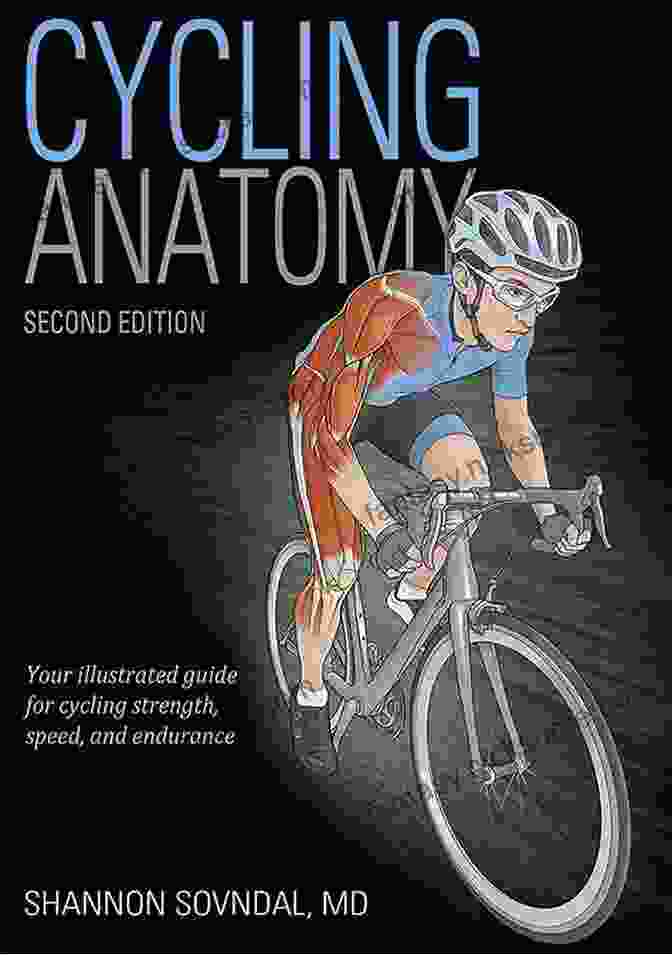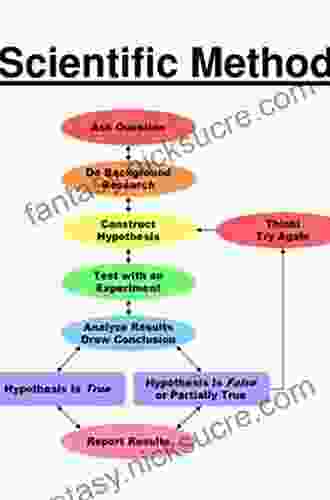Cycling Anatomy: An In-Depth Guide to the Muscles Involved in Biking


Cycling is a popular and effective form of exercise that can provide numerous physical and mental health benefits. To perform cycling efficiently and safely, it is essential to understand the anatomy of the muscles involved in this activity. In this article, we will explore the different muscle groups that contribute to cycling and discuss their specific functions and movements.
4.6 out of 5
| Language | : | English |
| File size | : | 130268 KB |
| Text-to-Speech | : | Enabled |
| Screen Reader | : | Supported |
| Enhanced typesetting | : | Enabled |
| Print length | : | 256 pages |
| Lending | : | Enabled |
Muscle Groups Involved in Cycling
Several muscle groups work together to power and control the bicycle during cycling. These muscle groups include:
Leg Muscles
* Quadriceps: The quadriceps group, which includes the rectus femoris, vastus lateralis, vastus medialis, and vastus intermedius, extends the knee joint and is primarily responsible for the downward push on the pedals. * Hamstrings: The hamstring group, which consists of the biceps femoris, semitendinosus, and semimembranosus, flexes the knee joint and assists in the upward pull on the pedals. * Calves: The calf muscles, including the gastrocnemius and soleus, plantarflex the ankle joint, which is necessary for pushing down on the pedals.
Core Muscles
* Abdominal Muscles: The abdominal muscles, which include the rectus abdominis, transverse abdominis, and obliques, stabilize the pelvis and spine and help maintain an upright posture on the bike. * Back Muscles: The back muscles, such as the erector spinae, support the spine and assist in maintaining balance while cycling.
Arms and Shoulders
* Biceps: The biceps, located on the front of the upper arm, assist in gripping the handlebars and maintaining a stable position on the bike. * Triceps: The triceps, located on the back of the upper arm, assist in controlling the handlebars and absorbing road vibrations. * Shoulders: The shoulder muscles, including the deltoids and trapezius, help stabilize the arms and provide support during pedaling and steering.
Muscle Actions Involved in Cycling
During the cycling motion, the muscles involved perform specific actions:
Downstroke: As the downstroke phase begins, the quadriceps extend the knee joint, pushing the pedals downward. The hamstrings assist in this movement by providing additional force.Upstroke: In the upstroke phase, the hamstrings flex the knee joint, pulling the pedals upwards. The glutes and calves also contribute to the upstroke movement.Backstroke: During the backstroke phase, the calf muscles plantarflex the ankle joint, pushing the pedals backward. The hamstrings and quadriceps assist in this movement by providing stability.Recovery: In the recovery phase, all muscle groups involved relax as the pedals move toward the starting position.
Importance of Proper Muscle Engagement
Engaging the correct muscles during cycling is crucial for efficient performance and injury prevention. Proper muscle engagement helps:
* Maximize power and speed * Improve balance and stability * Reduce muscle fatigue and soreness * Enhance overall cycling technique
Tips for Improving Muscle Engagement
To improve muscle engagement while cycling, consider the following tips:
* Focus on maintaining an upright posture and engaging the core muscles. * Keep a steady pedaling cadence and avoid overextension or jerking movements. * Use proper seat height and saddle position to ensure optimal leg extension and knee alignment. * Incorporate strength training exercises to strengthen the key muscle groups involved in cycling. * Listen to your body and rest when necessary to prevent muscle exhaustion and potential injuries.
Understanding the anatomy of cycling is essential for optimizing performance and maintaining a healthy body. By engaging the appropriate muscle groups and employing proper technique, cyclists can enhance their riding experience, prevent injuries, and reap the numerous benefits of this enjoyable form of exercise. Remember to consult with a qualified healthcare professional for personalized guidance and advice on cycling.
4.6 out of 5
| Language | : | English |
| File size | : | 130268 KB |
| Text-to-Speech | : | Enabled |
| Screen Reader | : | Supported |
| Enhanced typesetting | : | Enabled |
| Print length | : | 256 pages |
| Lending | : | Enabled |
Do you want to contribute by writing guest posts on this blog?
Please contact us and send us a resume of previous articles that you have written.
 Fiction
Fiction Non Fiction
Non Fiction Romance
Romance Mystery
Mystery Thriller
Thriller SciFi
SciFi Fantasy
Fantasy Horror
Horror Biography
Biography Selfhelp
Selfhelp Business
Business History
History Classics
Classics Poetry
Poetry Childrens
Childrens Young Adult
Young Adult Educational
Educational Cooking
Cooking Travel
Travel Lifestyle
Lifestyle Spirituality
Spirituality Health
Health Fitness
Fitness Technology
Technology Science
Science Arts
Arts Crafts
Crafts DIY
DIY Gardening
Gardening Petcare
Petcare Erin Mcrae
Erin Mcrae Paul Bellow
Paul Bellow Mercedes Lackey
Mercedes Lackey Paul Levy
Paul Levy Holly Jackson
Holly Jackson Pat Drake
Pat Drake Gwendoline Smith
Gwendoline Smith Rob Steger
Rob Steger Robert P Beebe
Robert P Beebe Sandra Davidson
Sandra Davidson Elizabeth A Stanley
Elizabeth A Stanley Dave Pine
Dave Pine Joan Roughgarden
Joan Roughgarden Ramona Finn
Ramona Finn Ken Venturi
Ken Venturi Fiona Danks
Fiona Danks Tiffany Loggins Psyd
Tiffany Loggins Psyd Sanford Holst
Sanford Holst Marty Gitlin
Marty Gitlin Ron Elbe
Ron Elbe Mark Lehner
Mark Lehner Gavin Weightman
Gavin Weightman Dan Murphy
Dan Murphy Linda Bauer
Linda Bauer Shannon Sovndal
Shannon Sovndal Laura Nowlin
Laura Nowlin Supersummary
Supersummary Melissa Abramovitz
Melissa Abramovitz Edwin H Friedman
Edwin H Friedman Kiera Cass
Kiera Cass Pedro Urvi
Pedro Urvi Carson Sievert
Carson Sievert Rocky Mcelveen
Rocky Mcelveen Elizabeth Thompson
Elizabeth Thompson Daniele Benedettelli
Daniele Benedettelli Zane Grey
Zane Grey Gianna Sobol
Gianna Sobol Mike Gibson
Mike Gibson Kevin Marx
Kevin Marx Elliot Kay
Elliot Kay Paris Williams
Paris Williams Gail Fay
Gail Fay Adiba Jaigirdar
Adiba Jaigirdar Jennifer Shannon
Jennifer Shannon Michael Volkmar
Michael Volkmar Doug Fletcher
Doug Fletcher Jacques Steinberg
Jacques Steinberg Herbert Dorsey
Herbert Dorsey Jessica Wiebe
Jessica Wiebe Bharath Ramsundar
Bharath Ramsundar Billy Griffiths
Billy Griffiths Nicole R Taylor
Nicole R Taylor Olivia Gordon
Olivia Gordon Isabel Fonseca
Isabel Fonseca Jared Derksen
Jared Derksen Craig Chappelow
Craig Chappelow Diana Wynne Jones
Diana Wynne Jones Jitendra Chouksey
Jitendra Chouksey Jessica Taylor
Jessica Taylor Neil D Jespersen
Neil D Jespersen Tim Weston
Tim Weston Vernon G Zunker
Vernon G Zunker Dylan Tomine
Dylan Tomine Dan Garner
Dan Garner Rachael Scdoris
Rachael Scdoris Carl B Tolman
Carl B Tolman Steve Biddulph
Steve Biddulph Harlan Coben
Harlan Coben Leland Chant
Leland Chant Henry Charles Lea
Henry Charles Lea Rupert Spira
Rupert Spira Bill Gladstone
Bill Gladstone Irene Mceachen
Irene Mceachen Anya Kamenetz
Anya Kamenetz Manly P Hall
Manly P Hall Sara Dyer
Sara Dyer Heather Long
Heather Long Zach Schonbrun
Zach Schonbrun Vukota Boljanovic
Vukota Boljanovic Douglas W Ota
Douglas W Ota Frank Giampaolo
Frank Giampaolo Blaine Bartel
Blaine Bartel James Patterson
James Patterson Carlos Castaneda
Carlos Castaneda Geraldine Van Bueren
Geraldine Van Bueren Sandra Berenbaum
Sandra Berenbaum Chris Napier
Chris Napier Sharmila Desai
Sharmila Desai Elsevier
Elsevier Jackie Brown
Jackie Brown Wendy Hinman
Wendy Hinman Dashka Slater
Dashka Slater Jackie Bolen
Jackie Bolen Farah Heron
Farah Heron Rod Powers
Rod Powers D C Haenlien
D C Haenlien Jennifer Kolari
Jennifer Kolari Lynette Rushton
Lynette Rushton Henry M Cowles
Henry M Cowles Charlotte E English
Charlotte E English Mark Booth
Mark Booth Max Help Workbooks
Max Help Workbooks John Kettle
John Kettle Special Tactics
Special Tactics Marion Zimmer Bradley
Marion Zimmer Bradley Stacie Mahoe
Stacie Mahoe Gary Kamiya
Gary Kamiya Tony Guerra
Tony Guerra Simon Buxton
Simon Buxton Susan M Orsillo
Susan M Orsillo Virginia Smith Harvey
Virginia Smith Harvey Bill Hammack
Bill Hammack Brad States
Brad States Tara Bianca
Tara Bianca Wanza Leftwich
Wanza Leftwich Bex Gunn
Bex Gunn David E Stuart
David E Stuart Donncha Hanna
Donncha Hanna Sheridan Anderson
Sheridan Anderson Henry Nicholls
Henry Nicholls William F Keegan
William F Keegan Ezekiel Eversand
Ezekiel Eversand Curvebreakers
Curvebreakers Joseph Edminister
Joseph Edminister Morgan Oostra
Morgan Oostra Frederica Relly
Frederica Relly Mark Vanhoenacker
Mark Vanhoenacker Bill Streever
Bill Streever Colin Thubron
Colin Thubron Clifford A Pickover
Clifford A Pickover David Benjamin
David Benjamin Jamie Dumas
Jamie Dumas Charles A Rhodus
Charles A Rhodus Mark Young
Mark Young Mosby
Mosby Jonathan Crichton
Jonathan Crichton Bryan Irwin
Bryan Irwin Ted Kaczynski
Ted Kaczynski Ian Wilson
Ian Wilson Jeremy Paxman
Jeremy Paxman Mike Veny
Mike Veny Jon Loeliger
Jon Loeliger Ingrid Chalufour
Ingrid Chalufour Marcus Brotherton
Marcus Brotherton Holger Schutkowski
Holger Schutkowski Michael J Tougias
Michael J Tougias Lisa Dorfman
Lisa Dorfman Phil Genova
Phil Genova Bev Pettersen
Bev Pettersen J Robert King
J Robert King Fred H Croom
Fred H Croom Deborah J Rumsey
Deborah J Rumsey John Brierley
John Brierley Michael Tlanusta Garrett
Michael Tlanusta Garrett Rob Casey
Rob Casey Martyn Denscombe
Martyn Denscombe Bill Boyum
Bill Boyum James Alexander Currie
James Alexander Currie David Halberstam
David Halberstam Andrea Cremer
Andrea Cremer Emma Griffin
Emma Griffin Bryan Mann
Bryan Mann Tony Ortega
Tony Ortega Michael D Alessio
Michael D Alessio Oscar Nilson
Oscar Nilson Ernest Raymond
Ernest Raymond Richard Post
Richard Post Robert A Pelcovits
Robert A Pelcovits Cheryl Marlene
Cheryl Marlene Chris Fischer
Chris Fischer J T Williams
J T Williams Stephanie Manley
Stephanie Manley Dina Nayeri
Dina Nayeri Elizabeth King
Elizabeth King Bill Patton
Bill Patton Gary Nicol
Gary Nicol Kasun Indrasiri
Kasun Indrasiri Gary Dean Quesenberry
Gary Dean Quesenberry Evan Purcell
Evan Purcell Peter Aitken
Peter Aitken Sheila Mackechnie Murtha
Sheila Mackechnie Murtha Dr Nancy L Nolan
Dr Nancy L Nolan Margo Armstrong
Margo Armstrong Laurence Price
Laurence Price Gregg Jackson
Gregg Jackson Silvia Dunn
Silvia Dunn Ginger Sinsabaugh
Ginger Sinsabaugh Tom Dodd
Tom Dodd Claudia Mazzucco
Claudia Mazzucco Robert F Burgess
Robert F Burgess Manoj Sharma
Manoj Sharma Zavonda Vinson Parrish
Zavonda Vinson Parrish Robert Byron
Robert Byron Sarah Zettel
Sarah Zettel James W Finegan
James W Finegan Mike Westerfield
Mike Westerfield Thomas Cleary
Thomas Cleary Melissa Layne
Melissa Layne Jelena Bogdanovic
Jelena Bogdanovic Rachna Chhachhi
Rachna Chhachhi Megan Mcgrory Massaro
Megan Mcgrory Massaro Patrick Mcginty
Patrick Mcginty Rick Steves
Rick Steves Styrling Strother
Styrling Strother Robert Axelrod
Robert Axelrod Michael J Epstein
Michael J Epstein Cherie Dimaline
Cherie Dimaline Emma Cannon
Emma Cannon Suzannah Rowntree
Suzannah Rowntree Carolyn Schulz
Carolyn Schulz Jacqueline B Persons
Jacqueline B Persons Al Walsh
Al Walsh Lucas Bessire
Lucas Bessire John C Norcross
John C Norcross Tiffany Bergin
Tiffany Bergin R E Skibiski
R E Skibiski Phil Robertson
Phil Robertson Shelby Mahurin
Shelby Mahurin H P Lovecraft
H P Lovecraft Matt Parker
Matt Parker Fodor S Travel Guides
Fodor S Travel Guides Diondre Mompoint
Diondre Mompoint Kenny Dill
Kenny Dill Bob Duchesne
Bob Duchesne Robert Greene
Robert Greene Bjorn Kiggen
Bjorn Kiggen Ross Bonander
Ross Bonander Jarrett Dapier
Jarrett Dapier Callum Roberts
Callum Roberts Kent Hrbek
Kent Hrbek Dan Yaccarino
Dan Yaccarino T Edward Nickens
T Edward Nickens Richard Holmes
Richard Holmes Nrup Parikh
Nrup Parikh Sue L Hamilton
Sue L Hamilton Alan Lawrence Sitomer
Alan Lawrence Sitomer Phoebe Bailey
Phoebe Bailey John Muir Laws
John Muir Laws Hilary Nangle
Hilary Nangle Dinah Bucholz
Dinah Bucholz Marie Max House
Marie Max House G William Barnard
G William Barnard Joshua Becker
Joshua Becker Davi Kopenawa
Davi Kopenawa Shantel Silbernagel
Shantel Silbernagel Issai Chozanshi
Issai Chozanshi George Mahood
George Mahood Zecharia Sitchin
Zecharia Sitchin Valeria Ray
Valeria Ray Kasey Edwards
Kasey Edwards P J E Peebles
P J E Peebles J Douglas Faires
J Douglas Faires Daniel J Velleman
Daniel J Velleman Joe Byers
Joe Byers Ta Nehisi Coates
Ta Nehisi Coates Billy Martin
Billy Martin David Nirenberg
David Nirenberg Marsha Vanwynsberghe
Marsha Vanwynsberghe Bill Gutman
Bill Gutman J D Gauchat
J D Gauchat Maggi Savin Baden
Maggi Savin Baden Editors Of Sports Illustrated
Editors Of Sports Illustrated Karen Palacios Jansen
Karen Palacios Jansen Marie Viljoen
Marie Viljoen Jane Nelsen
Jane Nelsen Robert Bruce Thompson
Robert Bruce Thompson Michael W Eysenck
Michael W Eysenck Ian Tuhovsky
Ian Tuhovsky Colleen Graves
Colleen Graves S W Wilcox
S W Wilcox Thad Beery
Thad Beery Kindle Edition
Kindle Edition Stephen L Morgan
Stephen L Morgan Jakub Marian
Jakub Marian Freddie Fernandez
Freddie Fernandez Gary Player
Gary Player Genius Reads
Genius Reads Sabaa Tahir
Sabaa Tahir Yau Ming Ng Thompson
Yau Ming Ng Thompson Mary Griffith
Mary Griffith Bill Miller
Bill Miller Erin Mckittrick
Erin Mckittrick Charlie Craven
Charlie Craven Jim Greenwood
Jim Greenwood Jedd K Parkinson
Jedd K Parkinson Greg Witt
Greg Witt Dawn Huebner
Dawn Huebner Max Lugavere
Max Lugavere Bode Miller
Bode Miller Richard W Fisher
Richard W Fisher John Mccannon
John Mccannon Jessica Denay
Jessica Denay Ryan Johnston
Ryan Johnston James Dashner
James Dashner Clement Salvadori
Clement Salvadori Zigzag English
Zigzag English Dawn Hadley
Dawn Hadley Krista Tippett
Krista Tippett Bill Karwin
Bill Karwin Eric H Cline
Eric H Cline Rachel Burgess
Rachel Burgess Christian Smith
Christian Smith Nancy Romita
Nancy Romita Charles Duhigg
Charles Duhigg Bill Schneider
Bill Schneider Stephen Arterburn
Stephen Arterburn Jamie Aten
Jamie Aten Pete Spencer
Pete Spencer Chris Ferrie
Chris Ferrie Peter Jackson
Peter Jackson Joann Cianciulli
Joann Cianciulli Kat Kruger
Kat Kruger Jojo Siwa
Jojo Siwa Steve Schwartz
Steve Schwartz Matthew Bowling
Matthew Bowling Zoe Hana Mikuta
Zoe Hana Mikuta Ellen Schuthof Lesmeister
Ellen Schuthof Lesmeister Dick Edie
Dick Edie Enzo Tonti
Enzo Tonti Bill Bennett
Bill Bennett Tina Cassidy
Tina Cassidy Katie Singer
Katie Singer Jacques Devore
Jacques Devore Rick Reilly
Rick Reilly Michael Matthews
Michael MatthewsR E S
 Chris Sajnog
Chris Sajnog Mark Solms
Mark Solms Jon M Sweeney
Jon M Sweeney Sue Enquist
Sue Enquist Matt Doeden
Matt Doeden Brienne Murk
Brienne Murk Hayley Mitchell Haugen
Hayley Mitchell Haugen Herschel Knapp
Herschel Knapp Curt Sampson
Curt Sampson Frank S Ring
Frank S Ring Pat Cohen
Pat Cohen Dr Julissa Hernandez Nd Cnhp
Dr Julissa Hernandez Nd Cnhp Terry Pratchett
Terry Pratchett Tom Humphrey
Tom Humphrey Sharon Bergen
Sharon Bergen Sara Low
Sara Low Susan Shelby Torrance
Susan Shelby Torrance Yossi Ghinsberg
Yossi Ghinsberg Paula Yoo
Paula Yoo Kristin N Spencer
Kristin N Spencer Simon Pridmore
Simon Pridmore David Price
David Price Bill Nowlin
Bill Nowlin Kristopher Martel
Kristopher Martel Paul Francis
Paul Francis Justin Lichter
Justin Lichter Stephan A Hoeller
Stephan A Hoeller Paul Halpern
Paul Halpern Sang H Kim
Sang H Kim T Whitmore
T Whitmore Eric A Weiss Md
Eric A Weiss Md John H Holland
John H Holland Kevin C Kelleher Md Md
Kevin C Kelleher Md Md Scott Wilson
Scott Wilson Karen Armstrong
Karen Armstrong Joshua Foer
Joshua Foer Joseph Campbell
Joseph Campbell Marilee Lebon
Marilee Lebon Ofer Gal
Ofer Gal Cj Andersen
Cj Andersen Paul Brummell
Paul Brummell Michael Lempert
Michael Lempert Helen Clarke
Helen Clarke Sandi Mann
Sandi Mann Thomas Bailey
Thomas Bailey Larry Baush
Larry Baush Meagan Trayler
Meagan Trayler Hugh Neill
Hugh Neill Scarlett Curtis
Scarlett Curtis Louis Sachar
Louis Sachar Dean Keith Simonton
Dean Keith Simonton Richard B Pelzer
Richard B Pelzer Rebekah Nathan
Rebekah Nathan Karyn D Hall
Karyn D Hall The Uk Mathematics Trust
The Uk Mathematics Trust Claire Russell
Claire Russell Brandon Sanderson
Brandon Sanderson George C Thomas
George C Thomas James R Payne
James R Payne Felicity Aston
Felicity Aston Beck Weathers
Beck Weathers Izzy Judd
Izzy Judd Marisa Imon
Marisa ImonMax Youngquist
 David E Johnson
David E Johnson Bill Moeller
Bill Moeller Megan Don
Megan Don Betsy Herman
Betsy Herman Jake Jacobson
Jake Jacobson Elizabeth Winthrop
Elizabeth Winthrop Doug Scott
Doug Scott Bob Glover
Bob Glover Linda D Dahl
Linda D Dahl Jeff Wheeler
Jeff Wheeler Holly Donahue Singh
Holly Donahue Singh Victoria Johnson
Victoria Johnson Carlos Torres
Carlos Torres Steven Hassan
Steven Hassan John Mccollister
John Mccollister Rough Guides
Rough Guides Blake Sebring
Blake Sebring Kate Marchant
Kate Marchant C D Holmes Miller
C D Holmes Miller Martin Davies
Martin Davies Vanessa Lapointe
Vanessa Lapointe Michael Sullivan
Michael Sullivan Jamie Foxx
Jamie Foxx Charles Simpson
Charles Simpson Lee Gutkind
Lee Gutkind Laurie Rubin
Laurie Rubin Marc Bona
Marc Bona Helen Irlen
Helen Irlen Rabbi Jason Sobel
Rabbi Jason Sobel Luciano Floridi
Luciano Floridi Aylette Jenness
Aylette Jenness David Joyce
David Joyce Dan Blanchard
Dan Blanchard Christopher Banecks
Christopher Banecks Peter Julius Sloan
Peter Julius Sloan Russ Harris
Russ Harris General
General Editors Of Garden And Gun
Editors Of Garden And Gun Bob Duff
Bob Duff Kate Darling
Kate Darling Richard Rohr
Richard Rohr Chris Sims
Chris Sims Joie Jager Hyman
Joie Jager Hyman Deborah Blum
Deborah Blum Dan Hamilton
Dan Hamilton Wendy Doniger
Wendy Doniger Steven M Levy
Steven M Levy Janice Selekman
Janice Selekman Stanislas Dehaene
Stanislas Dehaene Sam Harris
Sam Harris Kevin Sverduk
Kevin Sverduk Erin Beaty
Erin Beaty Yakima Canutt
Yakima Canutt Jeffrey Lindsey
Jeffrey Lindsey Joy Hakim
Joy Hakim Brian Crist
Brian Crist Simon Baron Cohen
Simon Baron Cohen Conway X Bowman
Conway X Bowman Ross Edgley
Ross Edgley Leah Day
Leah Day James P Allen
James P Allen Jane Bottomley
Jane Bottomley Michael Hartman
Michael Hartman Sophia Freeman
Sophia Freeman Mindy Mcginnis
Mindy Mcginnis Shawn Levy
Shawn Levy Charles Goodwill
Charles Goodwill Jen Castleberry
Jen Castleberry
Light bulbAdvertise smarter! Our strategic ad space ensures maximum exposure. Reserve your spot today!

 Charles DickensAcademic English Listening Practice Mini Lectures: A Comprehensive Guide to...
Charles DickensAcademic English Listening Practice Mini Lectures: A Comprehensive Guide to...
 Adrien BlairEmbark on the Adventure of a Lifetime: A Comprehensive Guide to Unforgettable...
Adrien BlairEmbark on the Adventure of a Lifetime: A Comprehensive Guide to Unforgettable... Scott ParkerFollow ·12.7k
Scott ParkerFollow ·12.7k Darrell PowellFollow ·12k
Darrell PowellFollow ·12k Juan RulfoFollow ·19.6k
Juan RulfoFollow ·19.6k Ezekiel CoxFollow ·3.8k
Ezekiel CoxFollow ·3.8k Alfred RossFollow ·2.7k
Alfred RossFollow ·2.7k Gary CoxFollow ·6.1k
Gary CoxFollow ·6.1k Milan KunderaFollow ·18.9k
Milan KunderaFollow ·18.9k John GreenFollow ·14.8k
John GreenFollow ·14.8k

 Sammy Powell
Sammy PowellBalancing Your Hormones Naturally: Regaining Fertility...
Hormones play a vital role in our...

 Kendall Ward
Kendall WardThe Other Baby Book: A Comprehensive Guide to Baby's...
The Other Baby...

 Kenneth Parker
Kenneth ParkerA Comprehensive Guide to Yoga Sadhana for Mothers:...
Motherhood is a...

 Neil Parker
Neil ParkerInside the Secret Space Programs
An Exposé...
4.6 out of 5
| Language | : | English |
| File size | : | 130268 KB |
| Text-to-Speech | : | Enabled |
| Screen Reader | : | Supported |
| Enhanced typesetting | : | Enabled |
| Print length | : | 256 pages |
| Lending | : | Enabled |












